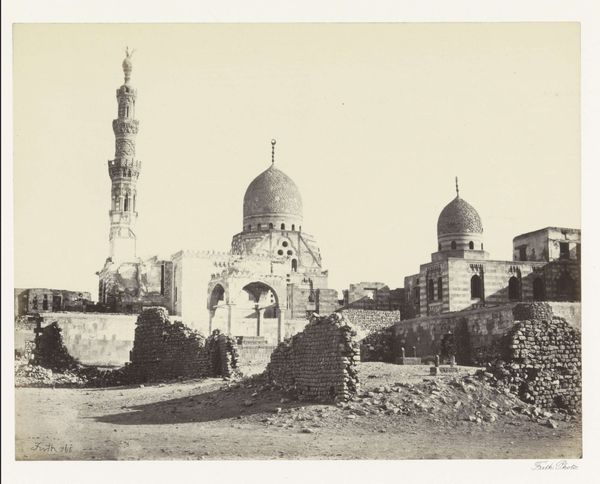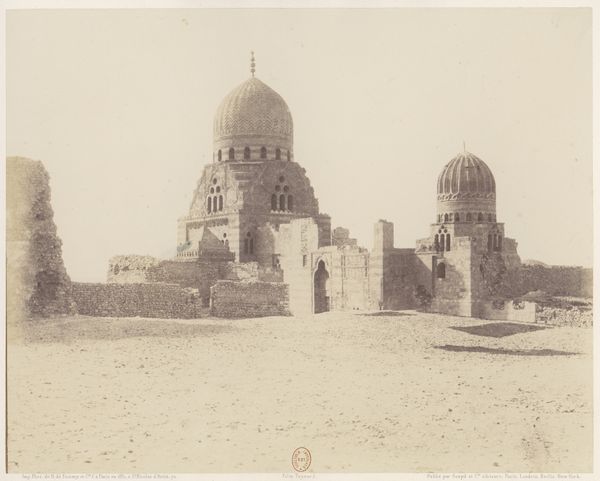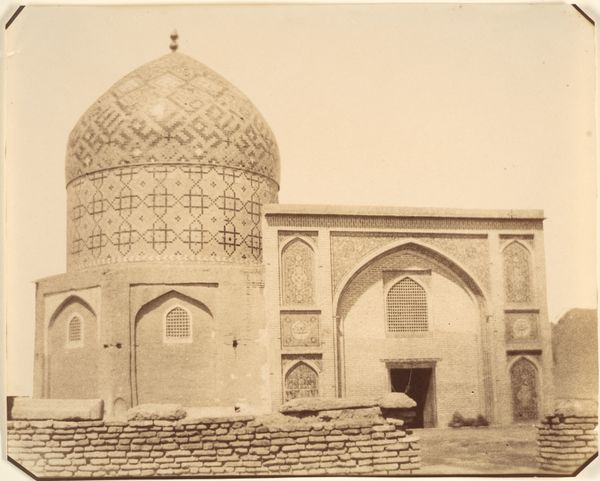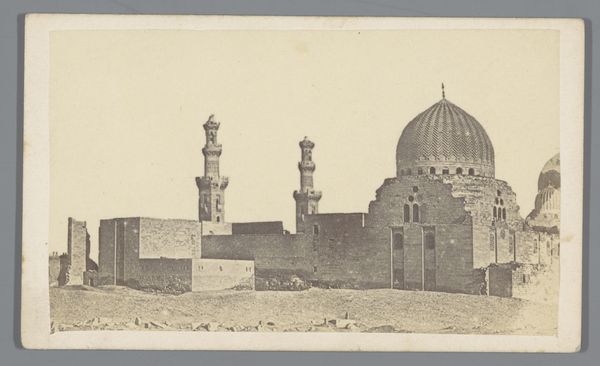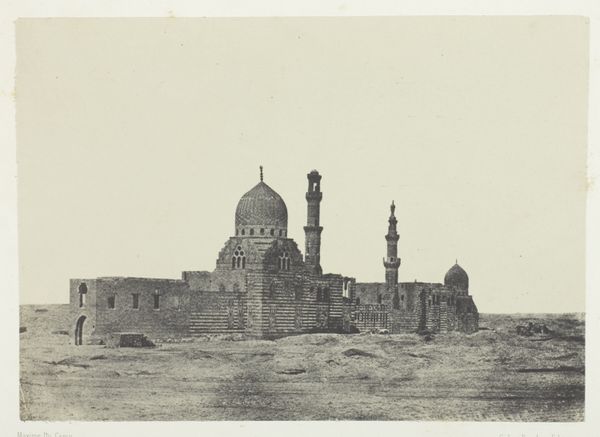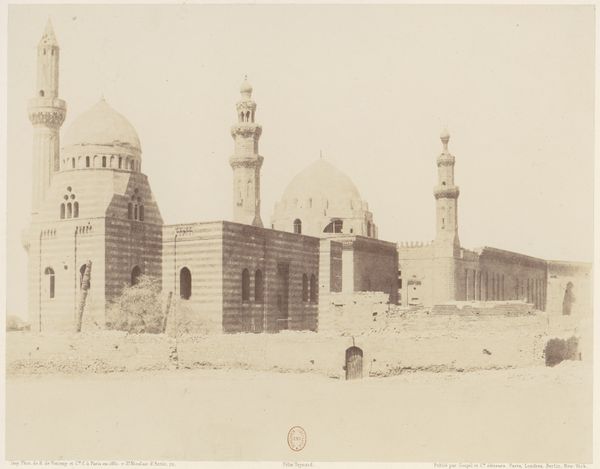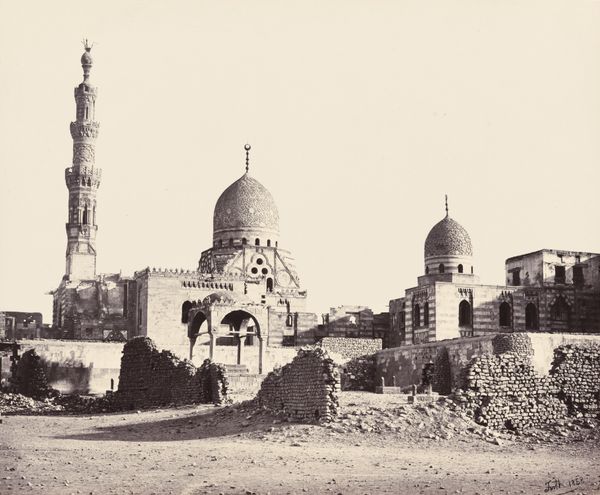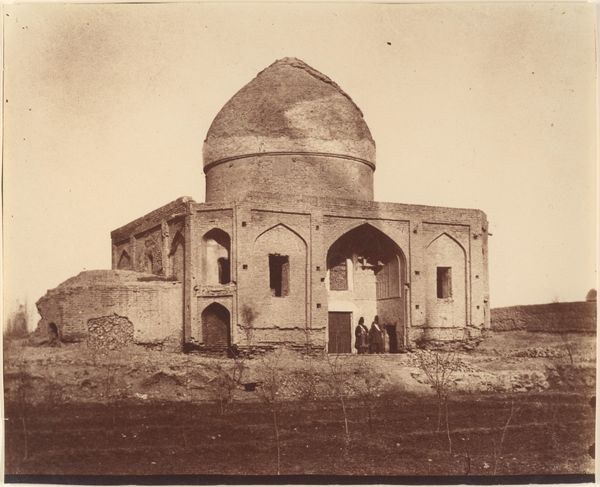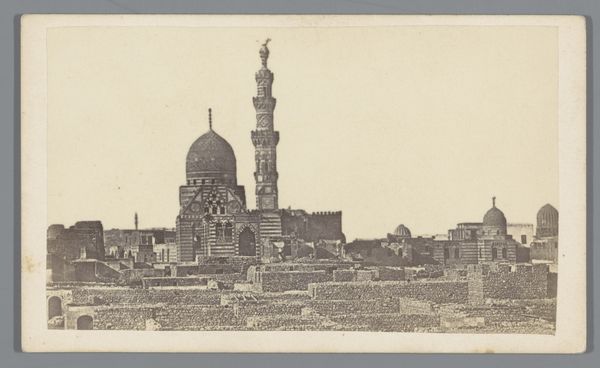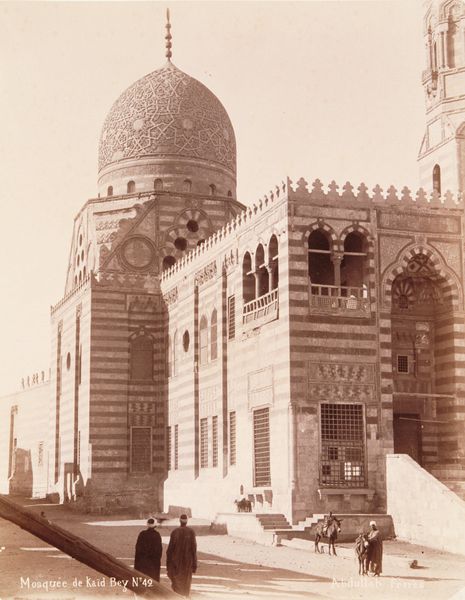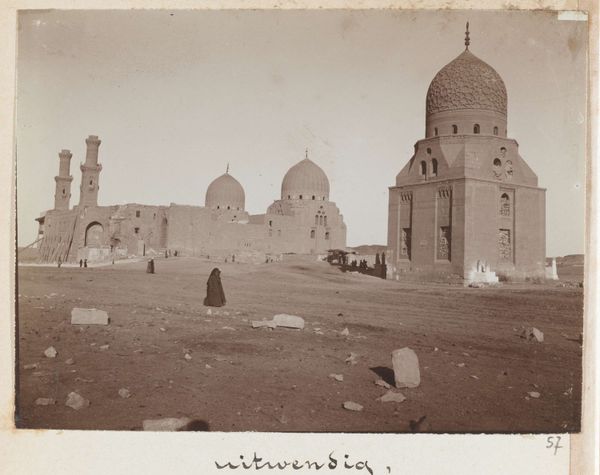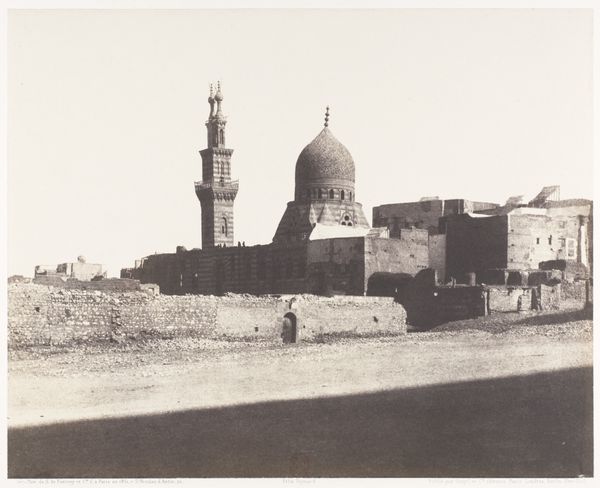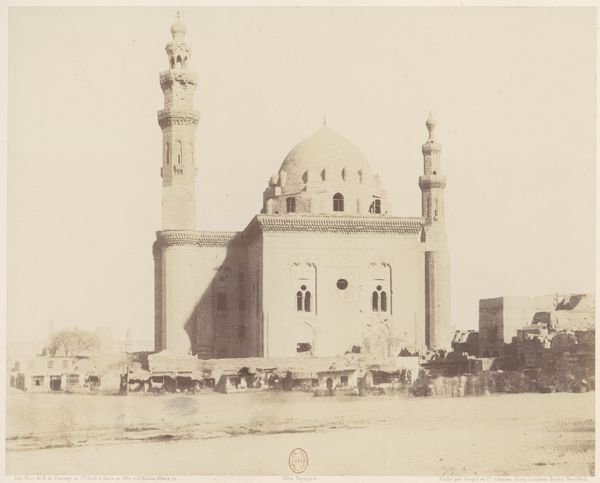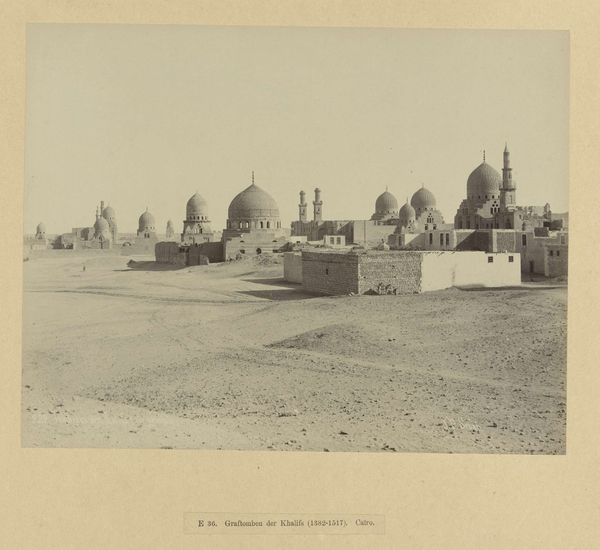
Tombeau de Sultans Mamelouks, Le Kaire Possibly 1849 - 1852
0:00
0:00
print, paper, photography, architecture
#
16_19th-century
# print
#
landscape
#
ancient-egyptian-art
#
paper
#
photography
#
historical photography
#
egypt
#
islamic-art
#
architecture
Dimensions: 15.8 × 21.7 cm (image/paper); 29.8 × 42.8 cm (album page)
Copyright: Public Domain
This photograph of the Mamluk Sultan's tombs in Cairo was captured by Maxime Du Camp sometime in the mid-19th century. It’s made through the calotype process, an early photographic technique. The image is printed on paper that has been treated with silver iodide, creating a somewhat soft, grainy aesthetic. This process influenced the appearance by allowing Du Camp to document the details of the stone architecture, capturing the rough texture and the play of light on the surfaces. The calotype process, though less precise than other methods, allowed for multiple prints to be made from a single paper negative. This was significant as photography was becoming a tool for documentation and dissemination of information, playing a crucial role in shaping European perceptions of foreign lands. Considering the social context, Du Camp's work was commissioned as part of a larger survey of Egypt. Photography played a role in colonialism, documenting and classifying cultures. The material and process used here underscores photography's transition from a scientific curiosity to a tool of knowledge production, influencing cultural narratives.
Comments
No comments
Be the first to comment and join the conversation on the ultimate creative platform.
